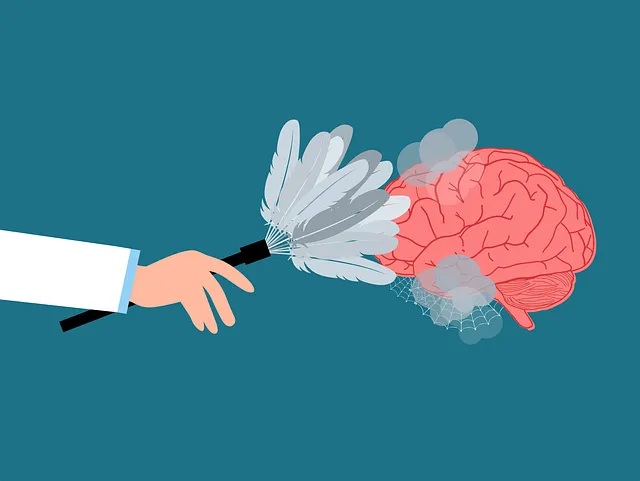Risk assessment and harm minimization planning are critical components in psychiatric care, enabling professionals to proactively manage potential risks and ensure patient safety. This comprehensive guide explores essential aspects of risk assessment in psychiatry, from understanding its nuances to developing effective strategies for mitigation. We delve into practical steps for implementation, using Broomfield Kaiser Permanente’s approach as a case study, while offering insights tailored to the unique challenges within the field. For more information, contact the Broomfield Kaiser Permanente psychiatry phone number.
- Understanding Risk Assessment in Psychiatry
- Identifying Potential Harms and Vulnerabilities
- Developing Effective Minimization Strategies
- Implementing Plan: Steps and Best Practices
- Case Study: Broomfield Kaiser Permanente Approach
Understanding Risk Assessment in Psychiatry

Risk assessment is a crucial component of psychiatry, especially when it comes to ensuring patient safety and well-being. It involves a comprehensive evaluation of an individual’s potential risks and hazards related to their mental health, which can impact their daily lives and interactions. At Broomfield Kaiser Permanente psychiatry, healthcare professionals utilize this process to identify and mitigate risks that may lead to harm or adverse outcomes. By meticulously analyzing various factors such as history of mental illness, past traumas, substance use disorders, and social circumstances, they create tailored plans for each patient.
This assessment goes beyond merely identifying dangers; it’s about understanding the unique emotional healing processes and self-esteem improvement journeys of every individual. The goal is to implement effective interventions and Trauma Support Services that address specific needs, thereby fostering a safer and more supportive environment. Through this methodical approach, healthcare providers at Broomfield Kaiser Permanente psychiatry strive to minimize potential risks and promote positive outcomes for their patients.
Identifying Potential Harms and Vulnerabilities

Identifying potential harms and vulnerabilities is a critical step in risk assessment and harm minimization planning. This process involves thoroughly examining various aspects of a given situation to anticipate possible negative outcomes, especially for individuals with mental health conditions. At Broomfield Kaiser Permanente’s psychiatry department, phone inquiries are often the first point of contact for patients seeking support. These interactions play a vital role in understanding patient needs and identifying vulnerabilities that may require immediate attention or tailored interventions.
Mental Health Awareness and Healthcare Provider Cultural Competency Training are essential components to ensure professionals can recognize these vulnerabilities accurately. By fostering an environment where mental wellness is prioritized, healthcare providers can better navigate complex patient scenarios. The Mental Wellness Podcast Series Production, with its diverse content, contributes to this initiative by providing valuable insights into various mental health topics, thereby increasing public understanding and encouraging proactive harm minimization strategies.
Developing Effective Minimization Strategies

Implementing Plan: Steps and Best Practices

Implementing a harm minimization plan involves several key steps and best practices. First, conduct a thorough risk assessment to identify potential hazards and vulnerabilities within the environment or context of concern. This should encompass all aspects of patient care, including medication management, therapy sessions, and social interactions. Engage with healthcare professionals like those available at Broomfield Kaiser Permanente psychiatry phone number for expert insights.
Once risks are identified, develop strategies to mitigate them using evidence-based practices such as Compassion Cultivation Practices, Emotional Regulation techniques, and Social Skills Training. Regularly review and update the plan based on patient progress and evolving best practices. Continuous monitoring ensures the plan remains effective in minimizing harm while fostering a supportive and therapeutic environment.
Case Study: Broomfield Kaiser Permanente Approach

Broomfield Kaiser Permanente stands out for its comprehensive approach to risk assessment and harm minimization planning, particularly in its psychiatry services. The organization prioritizes proactive measures to ensure patient safety and well-being. Their strategy involves a multi-faceted approach, encompassing detailed risk assessments, individual treatment plans, and ongoing monitoring.
By integrating communication strategies tailored to each patient’s needs, Broomfield Kaiser Permanente aims to enhance self-esteem and improve coping mechanisms. This holistic method not only tackles existing mental health issues but also equips individuals with effective anxiety relief techniques. The psychiatric phone line plays a vital role in providing immediate support and guidance, ensuring swift intervention when risks are identified.
Risk assessment and harm minimization planning are essential components of providing safe, effective psychiatric care. By understanding risk factors, identifying potential harms, and developing targeted strategies, healthcare professionals can significantly reduce adverse outcomes. The case study highlighting the Broomfield Kaiser Permanente approach demonstrates a comprehensive framework that integrates these practices. For more information on their services, interested parties can contact the Broomfield Kaiser Permanente psychiatry phone number for tailored support and guidance in harm minimization efforts.






